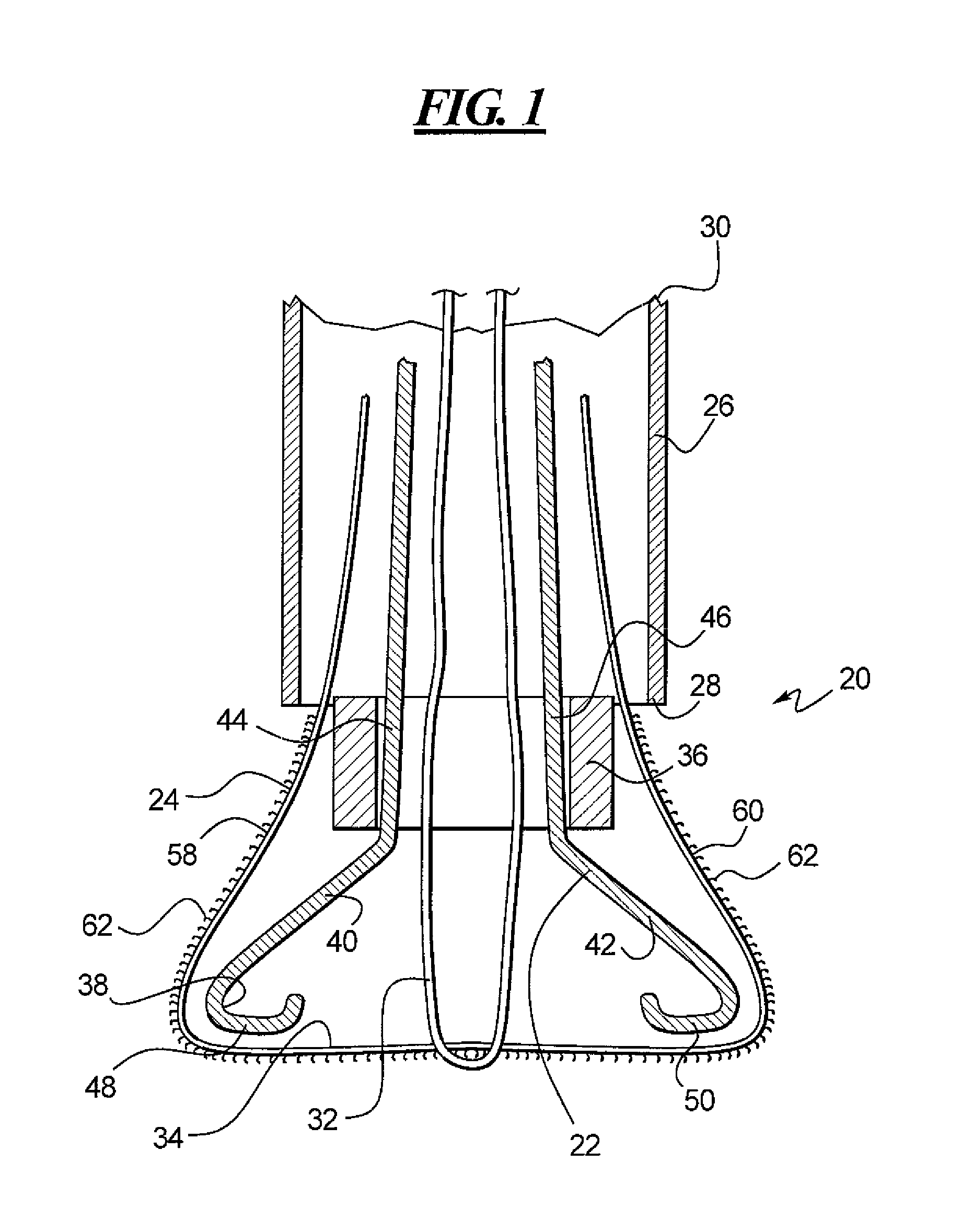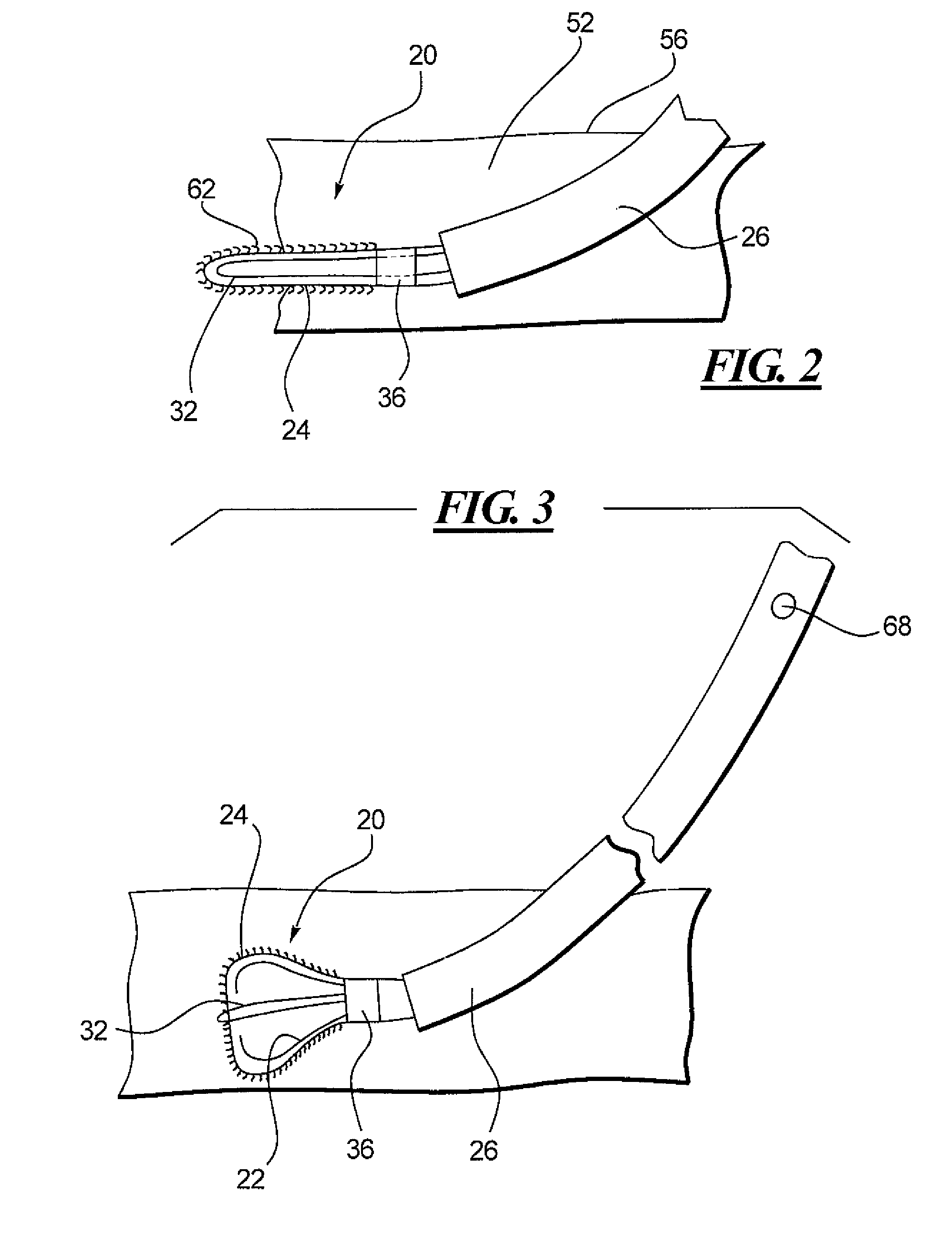Connective tissue closure device and method
a technology of connective tissue and closure device, which is applied in the field of medical devices, can solve the problems of affecting the patient's recovery, and affecting the healing effect of patients, and achieving the effect of improving healing effect, improving healing effect, and improving healing
- Summary
- Abstract
- Description
- Claims
- Application Information
AI Technical Summary
Benefits of technology
Problems solved by technology
Method used
Image
Examples
Embodiment Construction
[0025]Referring to the drawings and with specific reference to FIG. 1, a wound closure device constructed in accordance with the teachings of the disclosure is generally referred to as reference numeral 20. It is to be understood that while the device 20 is described below in connection with the closure of an opening in a blood vessel such as a femoral artery, the teachings of this disclosure can be used to construct any number of medical devices including those for closure of larger openings in other vasculature, organs, or skin.
[0026]The device 20 is shown in partial cut-away view in FIG. 1 as including an expandable frame 22 around which is wrapped a fabric 24. In addition, both the expandable frame 22 and fabric 24 are shown to be slidably disposed within an introducer sheath 26 having a distal end 28 and a proximal end 30. Completing the structure depicted in FIG. 1, the device 20 further includes a suture 32 removably connected to a closed end 34 of the fabric 24, as well as a...
PUM
 Login to View More
Login to View More Abstract
Description
Claims
Application Information
 Login to View More
Login to View More - R&D
- Intellectual Property
- Life Sciences
- Materials
- Tech Scout
- Unparalleled Data Quality
- Higher Quality Content
- 60% Fewer Hallucinations
Browse by: Latest US Patents, China's latest patents, Technical Efficacy Thesaurus, Application Domain, Technology Topic, Popular Technical Reports.
© 2025 PatSnap. All rights reserved.Legal|Privacy policy|Modern Slavery Act Transparency Statement|Sitemap|About US| Contact US: help@patsnap.com



